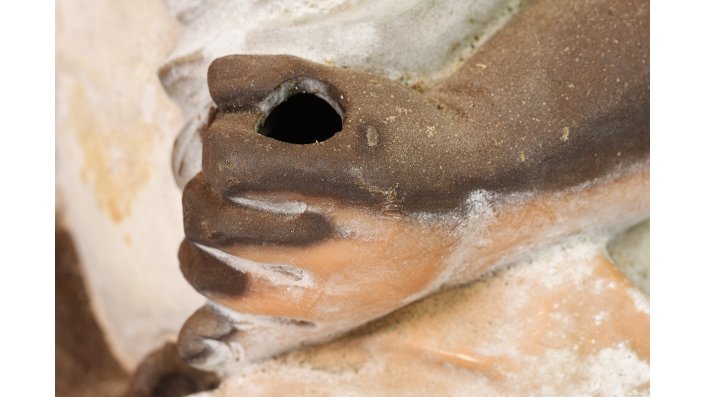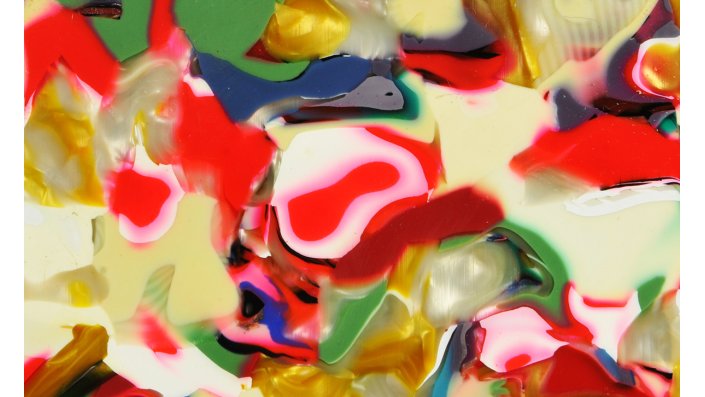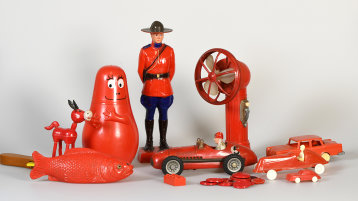Terminology for Conservation of Plastics
The difficulties in conserving plastic objects start with finding the right vocabulary. A uniform terminology has not yet been established in the young discipline of plastic conservation. Within the framework of the research project ‘Plastics – a modern material in its cultural-historical context’, a terminology for plastic damage will be developed to address the concerns of conservators.
Gallery
 0 / 0
0 / 0
Polyvinyl chloride toy ‚Marsupilami‘ with whitish deposit on its surface referred to as blooming. (Image: ©TH Köln, CICS, Lisa Burkart 2020)
 0 / 0
0 / 0
Part of a polyvinyl chloride garden gnome with brown discolouration. (Image: ©TH Köln, CICS, Lisa Burkart 2020)
 0 / 0
0 / 0
Crack and deformation along the lid of a cellulose acetate box. (Image: ©TH Köln, CICS, Nadin Radecke 2020)
In the field of plastics, the stakeholders include a wide variety of professionals from museums, industry, monument care, crafts, humanities and natural science. Until now, interest groups have come up with their own terminology for the same or similar observations, such as failures, defects and aging phenomena. In order to document the changes in objects, it is crucial that we establish a common terminology, use it consistently in communication with other interest groups, to ensure a common understanding of terms.
As soon as changes appear on the surface of an object, the failure analysis begins (describing, documenting, evaluating, identifying the cause of the failure and developing a monitoring plan). However, describing the failure poses its own challenges, especially for conservators with a lack of experience in this field. The limited terminology and assessment criteria toughen the misunderstandings between different interest groups.
Fortunately, the German Federal Ministry of Education and Research (BMBF) is now funding a project focusing on “The Language of Objects”. The four-year research project aims to facilitate transdisciplinary cooperation between art and design historians, plastic engineers and conservators. Involved in the project are the LVR Industrial Museum in Oberhausen (IMus), the Institut für Kunststofftechnik (IKT) at the University of Stuttgart and the Cologne Institute of Conservation Sciences at the University of Applied Sciences (CICS).
We are collaborating with the Design Museum Gent (project: “Know, Name and Assess your Plastics”), the Getty Conservation Institute and the Institute of Translation and Multilingual Communication at the Cologne University of Applied Sciences.
With the various disciplines working in collaboration, it will be possible to gather as much information as possible by reading the traces on the objects and to develop a comprehensive terminology.
At the present time, 94 terms have already been collected and defined. In interdisciplinary workshops, these definitions will be discussed and evaluated with experts from the respective fields (plastics engineers, humanities scholars and conservators). At the same time, a database is being developed to make the information publicly available after completion.
Further links and downloads
 BMBF
(Image: BMBF)
BMBF
(Image: BMBF)
The project KuWerKo is funded by the Federal Ministry of Education and Research (BMBF).
April 2020




